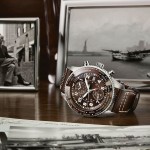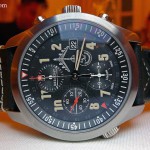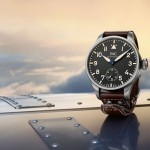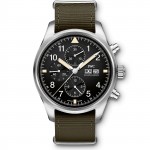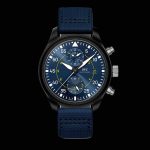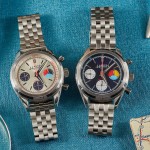Insight: The Last Pilot’s Watch – Tutima’s Military Chronograph
The history and significance of the reference 798.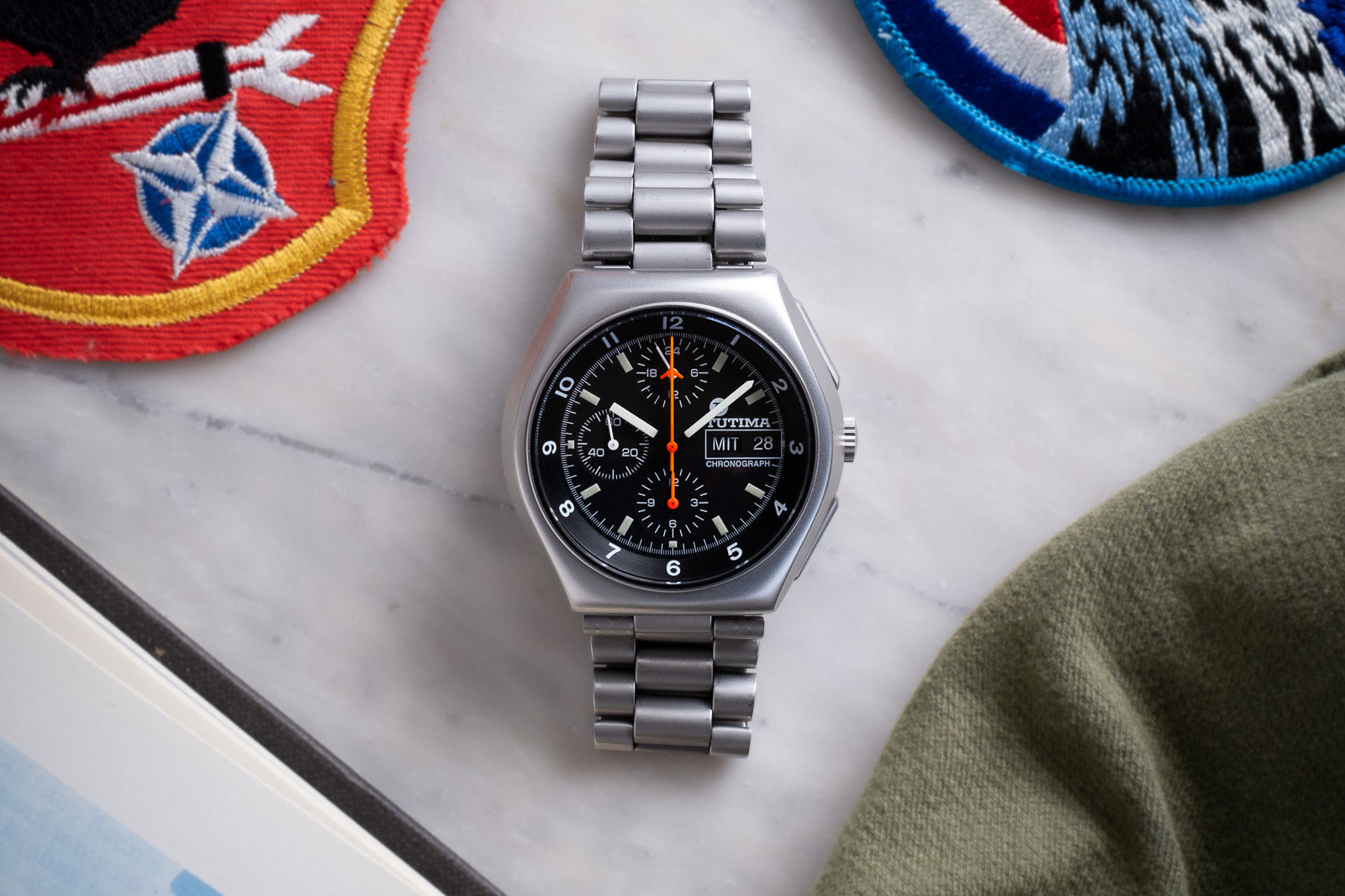
Pilot’s watches, and specifically military-inspired pilot’s watches, are a pillar of the modern, luxury watch industry. Dozens of brands, notably IWC, Breitling, Bell & Ross, Bremont, and Yema, have made military aviation a core theme of their image. So it’s somewhat ironic that today’s elite military pilots don’t wear mechanical watches in the cockpit.
A recent survey of pilots at MCAS Miramar, the airbase once home to the prestigious “Strike Fighter Tactics Instructor” programme – better known as TOPGUN – revealed that not a single pilot was wearing a mechanical watch. Instead, military pilots increasingly wear smartwatches designed specifically for aviators like the Garmin D2 that can monitor oxygen levels and act as a backup navigation system.
Modern pilot’s watches made by luxury brands are more like “fan fiction”; a designer’s dream of what might have been. But this wasn’t always the case. Mechanical watches were once state-of-the-art technology and vital instruments for navigators and pilots before being rendered obsolete by quartz technology.
This is the story of how the urgency of the Cold War gave the humble balance wheel one last chance to patrol the skies.
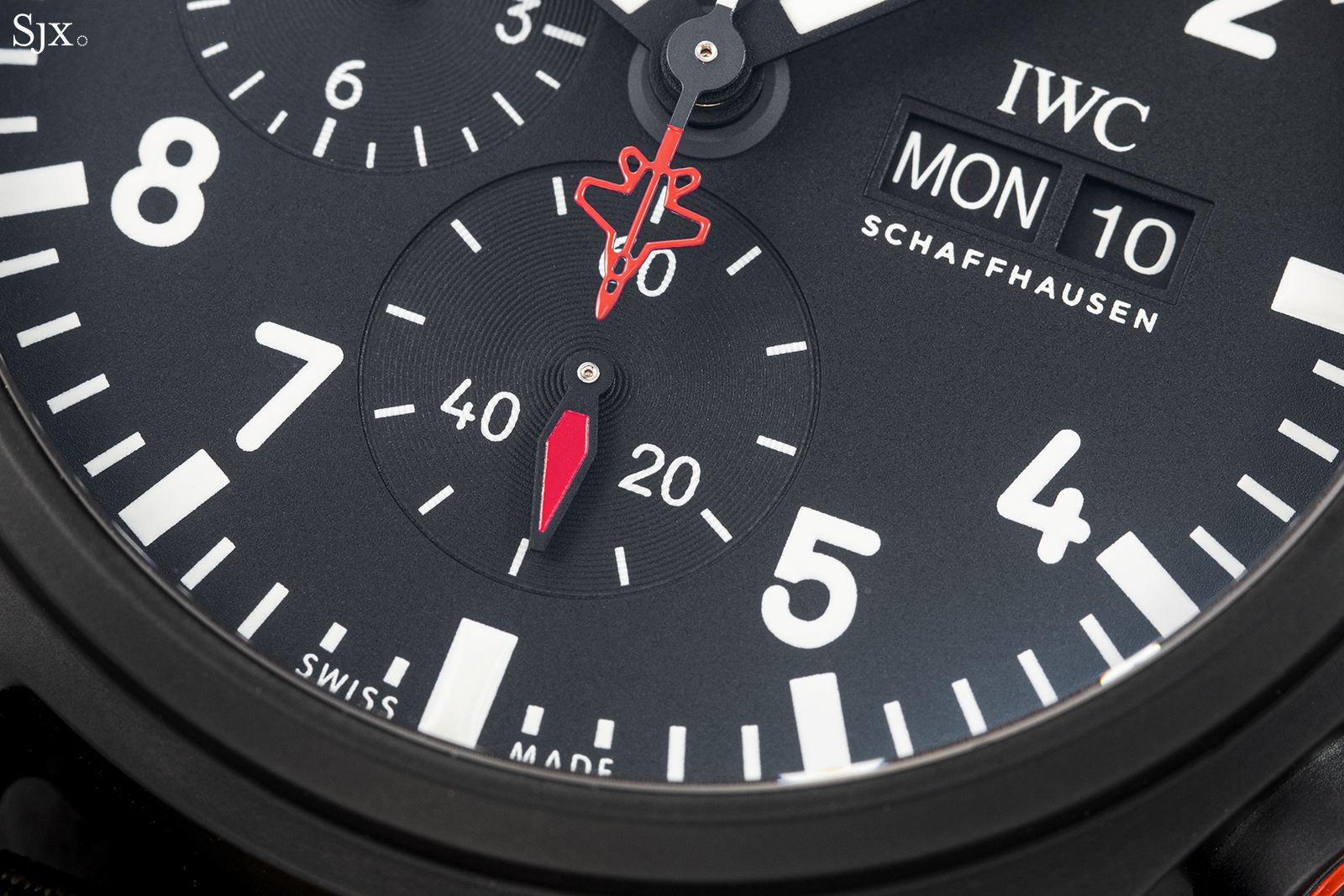
The jet-shaped counterweight on the IWC Top Gun SFTI calls to mind the airplane-tipped chronograph minutes hand of Cold War-era pilot’s watches like the Tutima 798
A brief history of the pilot’s watch
Pilot’s watches have been around for almost as long as there have been pilots. Wristwatches served a number of functions in early cockpits, but their most critical role was to aid in navigation. The first pilots navigated by simply looking down at what was beneath them, but once pilots started to fly greater distances – particularly over bodies of water with no landmarks – navigators increasingly relied on dead reckoning and celestial navigation, techniques that required comparing instrument readings with a reference time.
Introduced in 1929 by Longines, the Weems Second-Setting watch was the first purpose-built navigational pilot’s watch. It was designed by US Navy officer Philip Van Horn Weems to enable pilots to synchronise their watches with a radio time signal to improve their location accuracy while performing celestial navigation. This concept was further refined by Charles Lindbergh, who used the Second-Setting watch as the basis for the Hour Angle watch he developed with Longines in 1931.
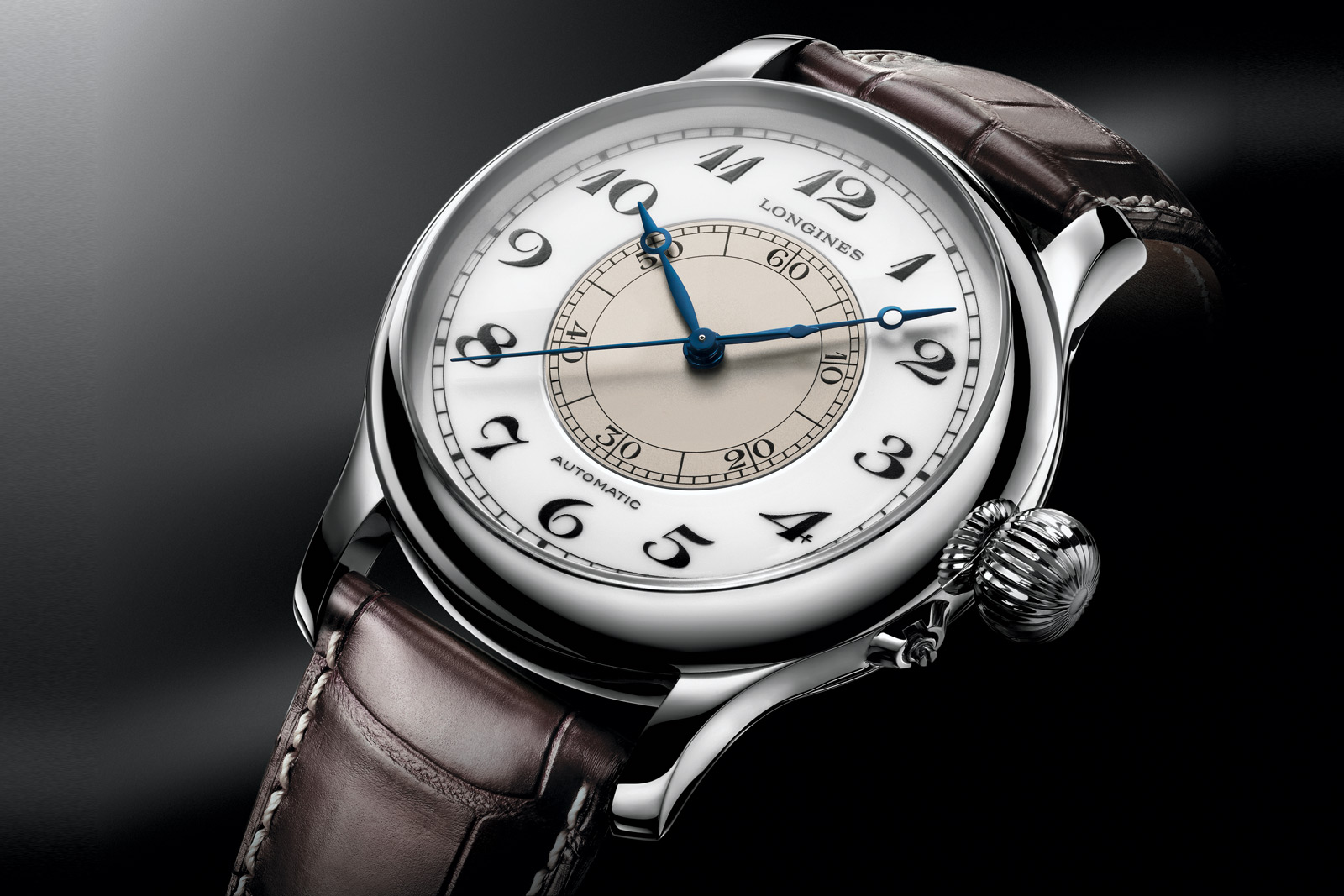
A modern remake of the Weems Second-Setting watch, the first purpose-built pilot’s watch. Image – Longines
In WWII and the post-war years, military tactics began to dictate the functionality for pilot’s watches. Chronographs became the new norm, with numerous manufacturers in Switzerland, France, and Germany producing watches for military contracts. The Type 20 for the French air and naval forces is one of the most famous examples.
By the early 1980s, increasingly sophisticated inertial navigation systems had made dead reckoning and celestial navigation obsolete, but pilot’s chronographs were still considered vital for coordinating mission operations.
At the same time, electronic quartz watches were rapidly eclipsing their mechanical counterparts for specialist applications like aviation and diving where absolute precision and reliability were required. But history would intervene to give the mechanical pilot’s watch one last hurrah.
The last mechanical pilot’s watch
In 1982 there were still no analog quartz chronographs, but the West German Luftwaffe needed to equip its pilots who were supporting NATO’s policy of containment to prevent the spread of communism. That year, Doomsday clock reached four minutes to midnight, the closest it had been to nuclear catastrophe in almost 30 years, so the German fighter pilots needed watches quickly.
The air force developed criteria for the perfect pilot’s chronograph and solicited bids from local manufacturers. A year later, the contract was awarded to a handful of German watchmakers, including Tutima, Arctos, and Tengler.
As a result, Tutima debuted the reference 798 chronograph in 1984 and quickly won another contract to supply not only the German air force, but other NATO members as well – explaining why the 798 is often referred to as the “NATO” chronograph.
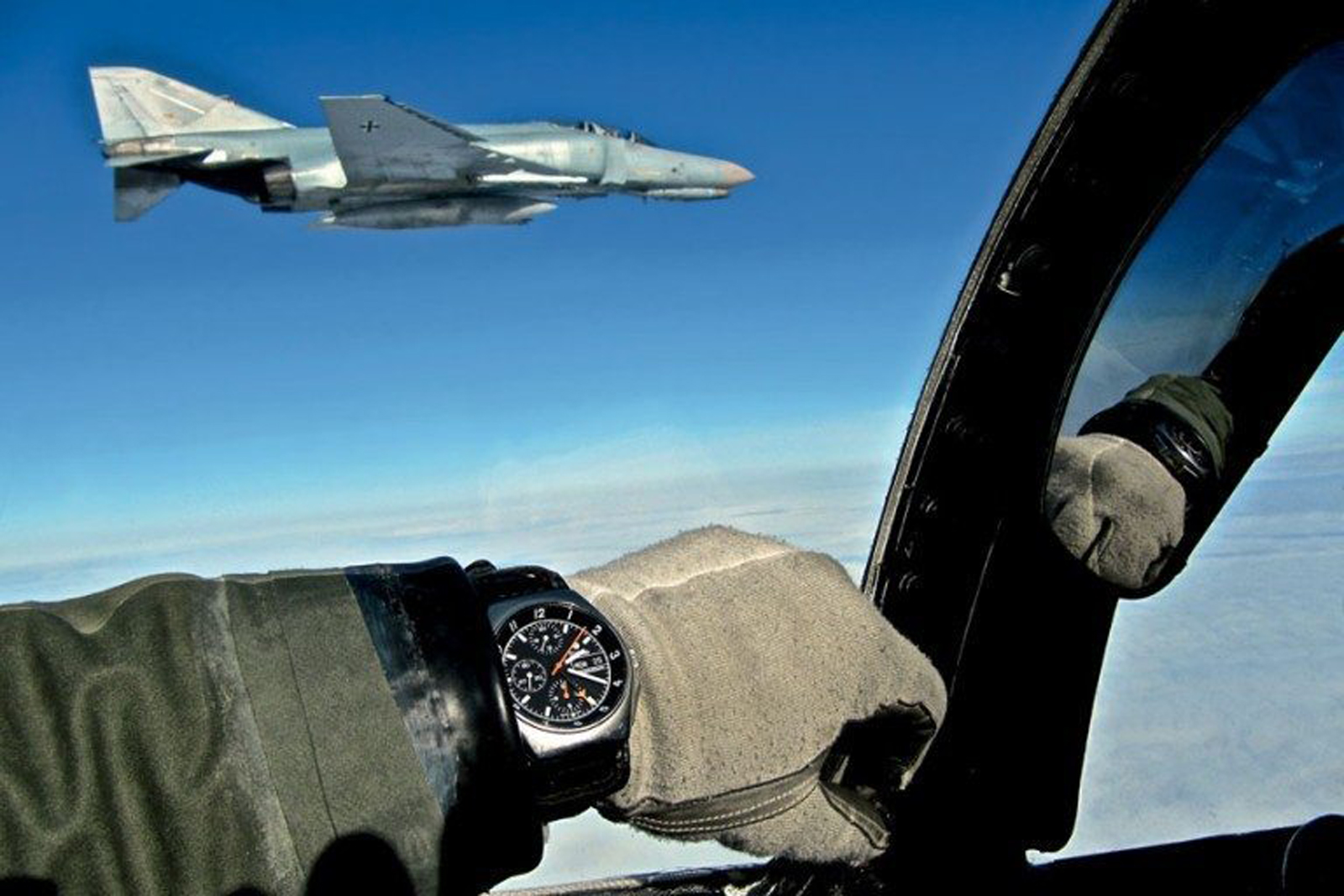
West German pilots received training in the United States at sites like Luke Air Force Base in Arizona, and supersonic American fighter jets like the McDonnell Douglas F-4F Phantom II (pictured above) were delivered to the West German air force to patrol the skies along the Iron Curtain. Image – Tutima
The timeline is significant because it means that the Tutima watches built for the NATO contract in 1984 were probably the last true purpose-built mechanical pilot’s watches. If the procurement process had started any later, I think it’s unlikely a mechanical movement would have been chosen.
Consider the timing. In early 1980s, Ferdinand Alexander Porsche and IWC together developed a watch for the West German Navy’s Kampfschwimmer, an elite combat diver unit equivalent to the US Navy SEALs. The resulting Ocean 2000 replaced the automatic Blancpain Fifty Fathoms dating from the 1960s that was in use up to that time. The Ocean 2000 was delivered with both mechanical and quartz movements, though the latter was more numerous.
And in 1983, the British Royal Navy replaced its stock of automatic dive watches, including the famous Rolex refs. 5513 and 5517 “Milsub”, with quartz dive watches from CWC. When Seiko finally introduced the world’s first analog quartz chronograph that same year, it was quickly adopted as standard issue by the British Royal Air Force in 1984.
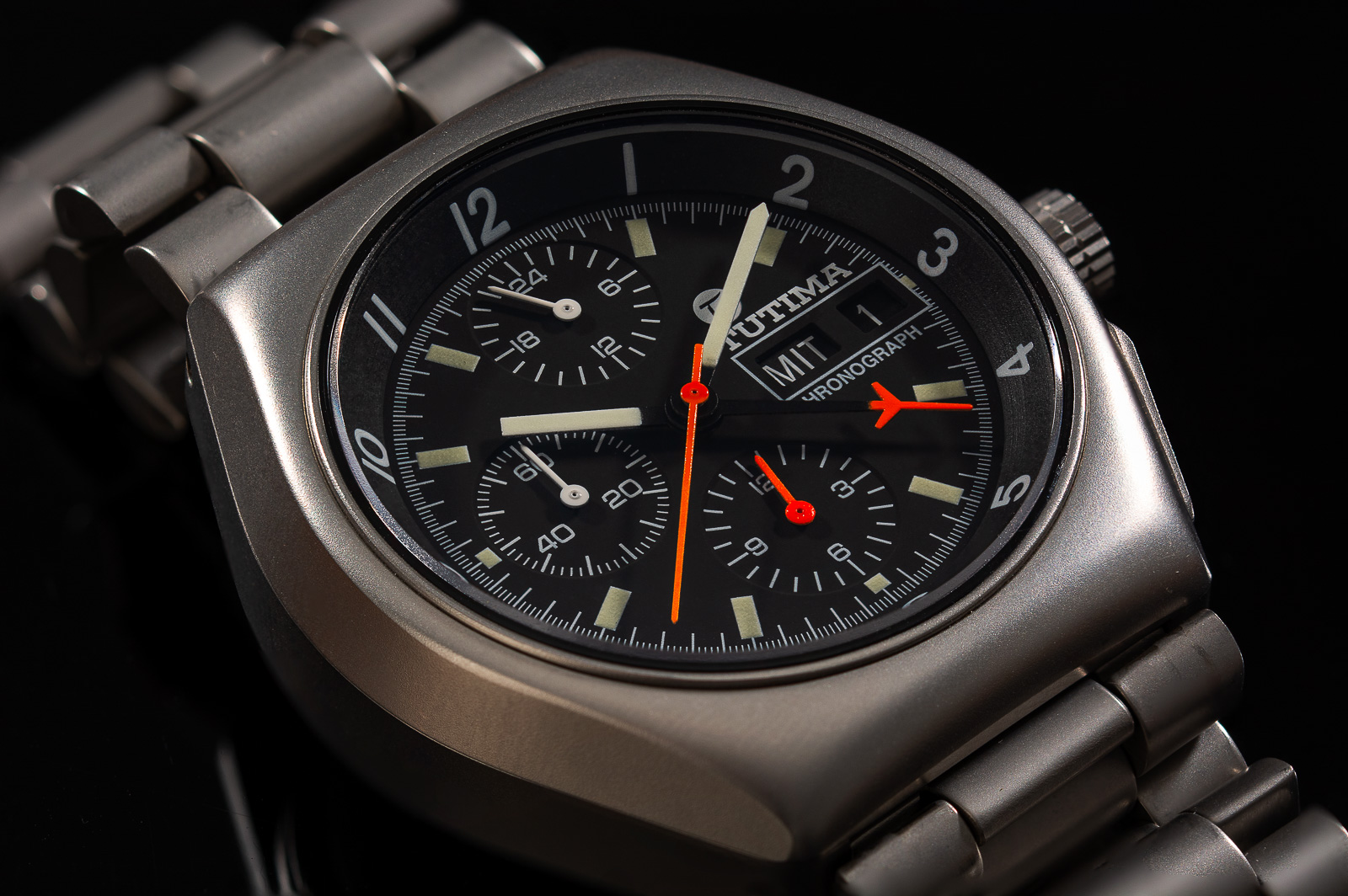
The Tutima Military Chronograph ref. 798 was selected by NATO in 1984. Image – @breguet_numerals
So if quartz watches were more reliable and precise, why does the 798 have a mechanical movement? This article in WatchTime suggests the reason was battery life. “[The government’s] specs required that the watch have a mechanical movement since there was no telling when a quartz watch battery would die.”
But I have doubts about this justification. If battery life was a concern at the time, I doubt the West German and British forces would have been comfortable issuing quartz dive watches to their elite divers in 1983.
Instead, I think it’s more likely that NATO, which had more important issues to focus on, simply reused the specifications developed by the West German government in 1982, before any quartz alternatives existed. I’ve searched the digitised NATO archives but haven’t been able to locate the original tender documents, so this is just a theory. Either way, the future would belong to quartz.
A Cold War relic
The Tutima 798 was introduced in 1984. That same year, the watch was selected by NATO as standard issue for pilots and assigned NATO Stock Number (NSN) “6645-12-194-8642”. More instrument than accessory, the NSN indicates the 798 falls under the category of “Instruments and Laboratory Equipment”.
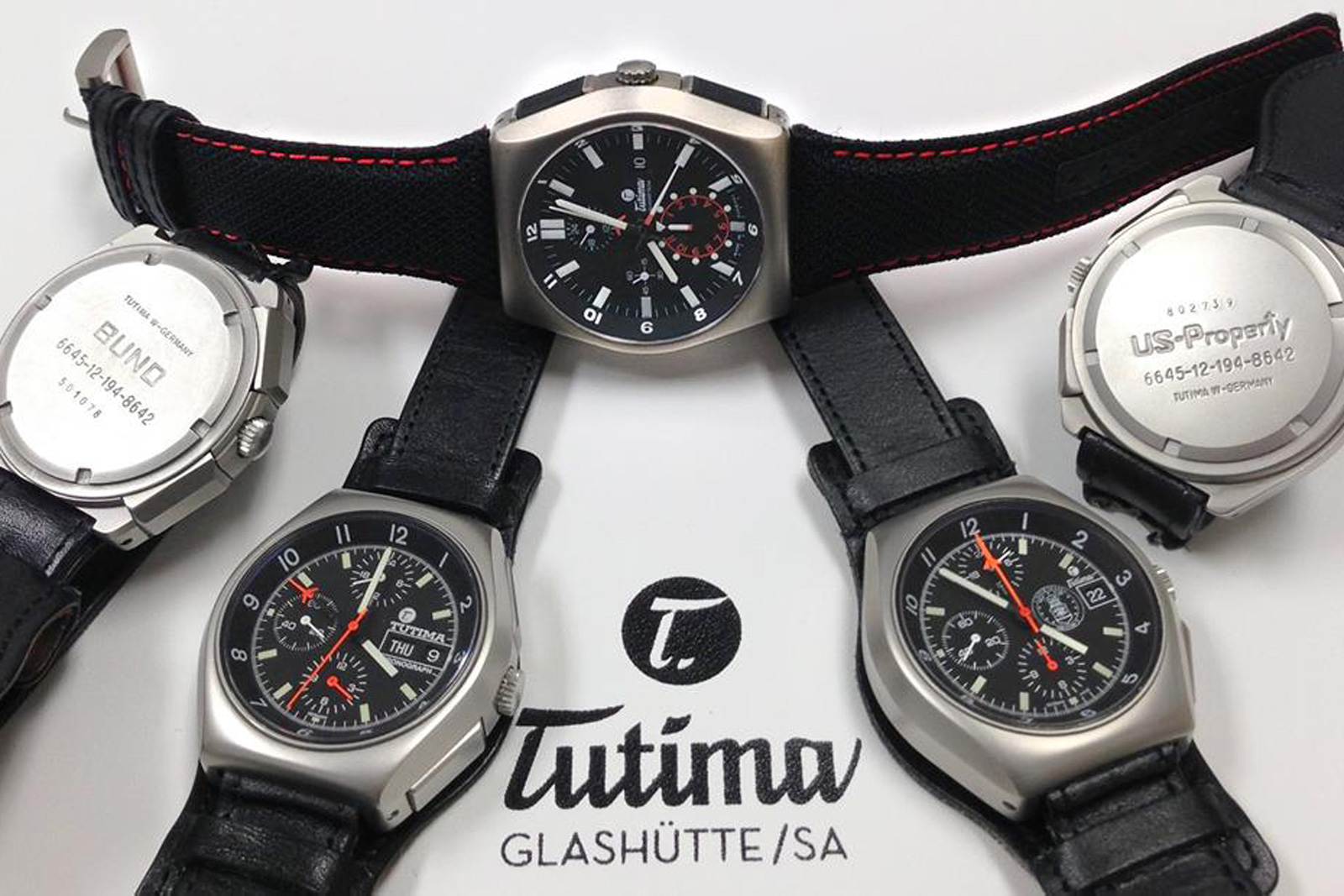
Military-issued 798s were stamped by issuing authority and the NSN. The example at the top left was issued to the West German Air Force, while the example at the top right was issued to the US Air Force. The inscription “Tutima W-Germany” indicates the watches were produced prior to German reunification in 1990. Later examples were marked “Tutima Germany.” Image – Tutima
The 798 is a large watch at 43 mm across and almost 14.6 mm thick, but it wears well due to its short lugs. Wearability is also improved as all of the case edges are rounded to prevent it from snagging on clothing or safety harnesses.
The minimalist dial and short, hooded lugs were clearly influenced by the Orfina Porsche Design Chronograph 1 of the early 1970s. Orfina was the first brand to apply a matte black coating to the watch case (a delicate powder coating and not PVD as widely believed) but Tutima instead opted for a more durable bead-blasted, “pearled” finish.
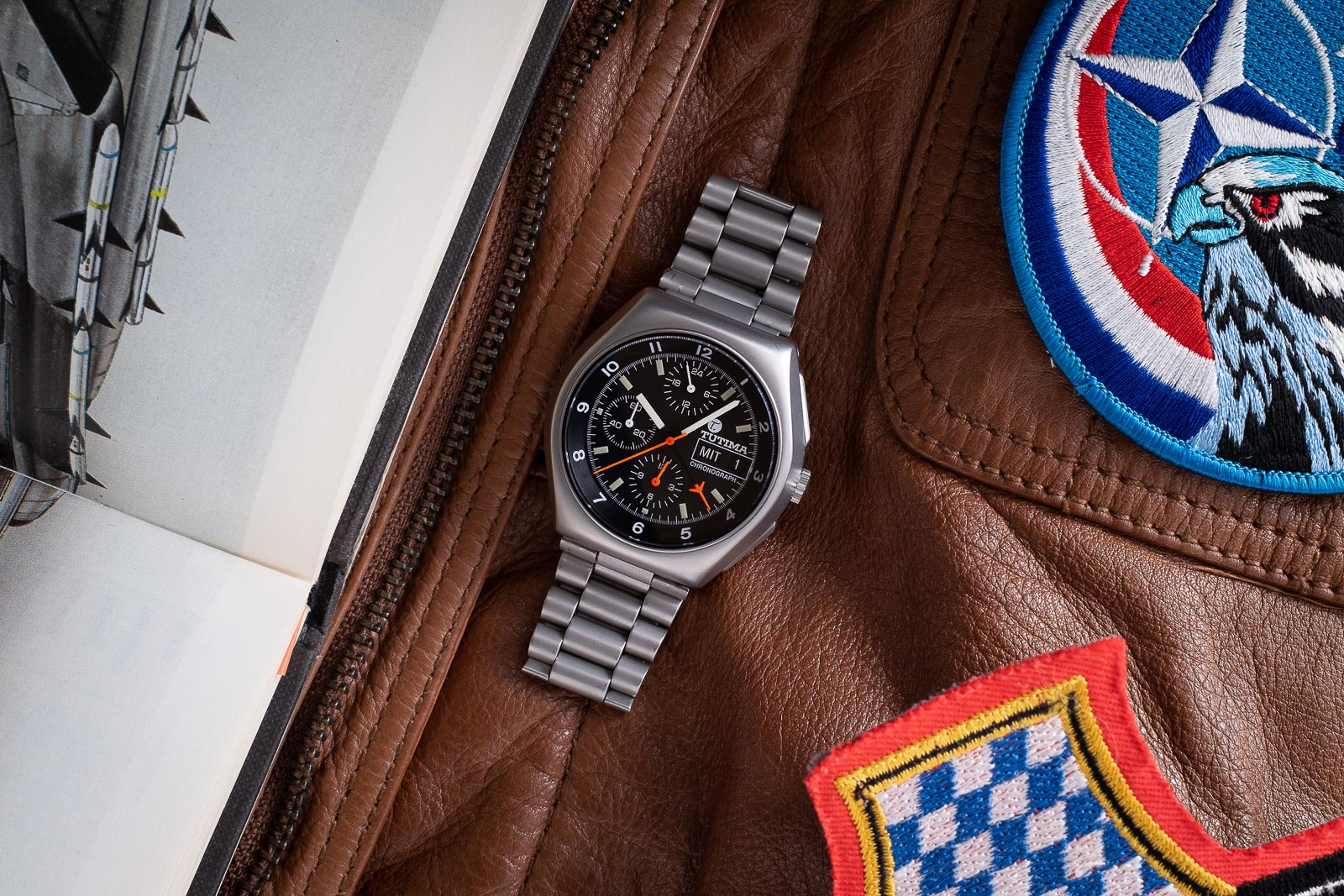
The Military Chronograph. Image – @breguet_numerals
The dial of the 798 was designed to be an extension of cockpit instrumentation. The hands and dial markers were coated in radioactive tritium so they would glow in the dark, and, in the interest of maximising legibility, non mission-critical indications, like the tachymeter scale, were eliminated.
While the omission of a tachymeter scale may surprise some chronograph purists, it’s a reflection of the purpose-built nature of the watch. For reasons of legibility, most chronograph tachymeters max out at 500mph, which is below the cruising speed of the both the F-4F Phantom II and Panavia Tornado fighter jets used by the West German air force.
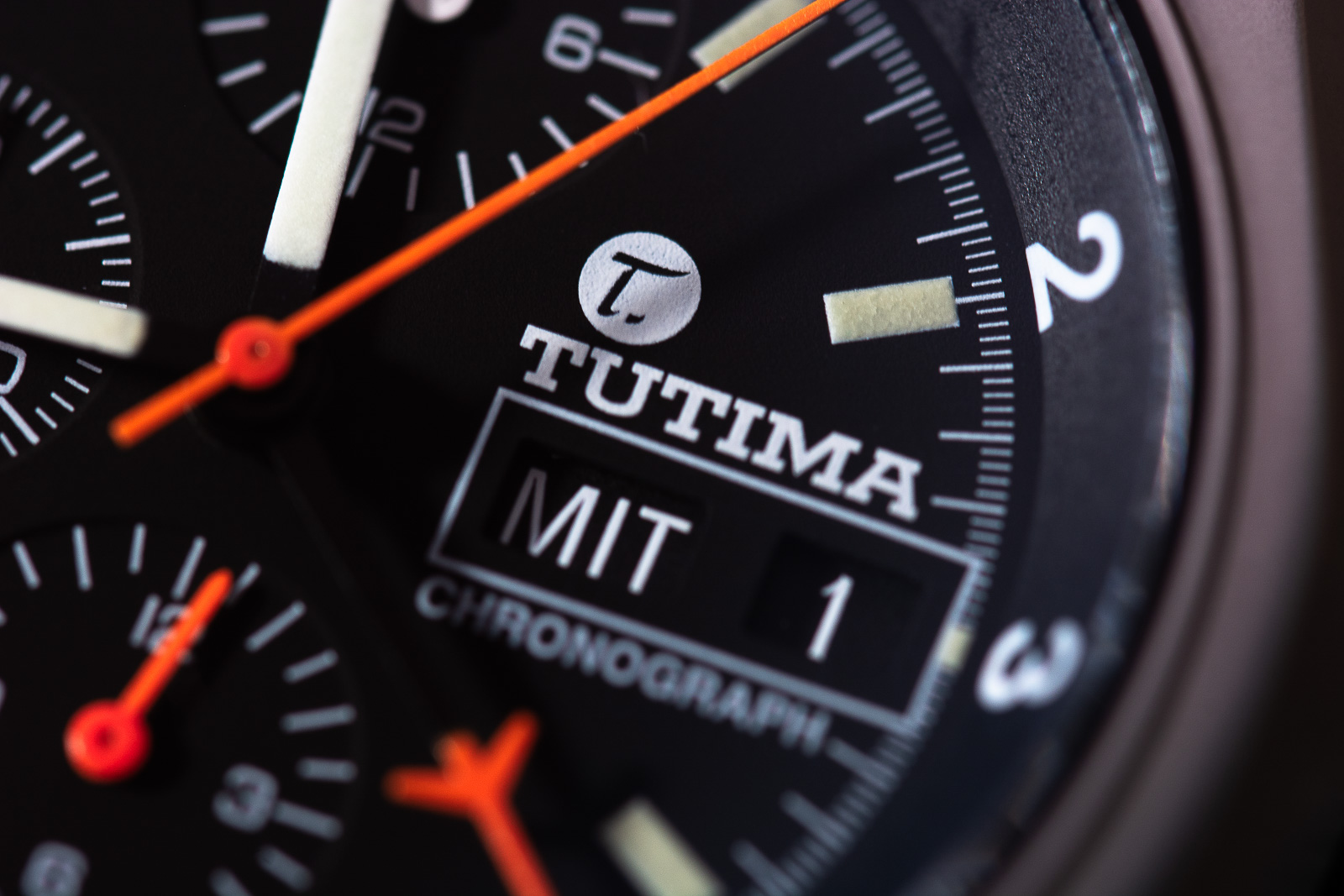
Originally designed for German-speaking pilots, the watch naturally displays the day of the week in German. Image – @breguet_numerals
To aid pilots in the event of a water landing, the case was water resistant to an impressive 100 m (later increased to 200 m). By way of comparison, the modern Omega Speedmaster Professional and IWC Top Gun SFTI are only rated to 50 m and 60 m, respectively.
Water resistance is par for the course for any serious tool watch, but a pilot is more likely to experience a rapid loss of pressure than a rapid ingress of water. For this reason, the sapphire crystal in the 798 is secured to withstand low pressure, preventing it popping off at altitudes up to 50,000 feet; an uncommon safety feature.
Finally, Tutima added what has become the signature touch of the 798 – integrated pushers. Tutima claims the integrated pushers make it easier to operate the chronograph wearing gloves. Personally, I’m skeptical; in my experience they’re no more or less easy to operate using gloves than a chronograph with ordinary pushers.
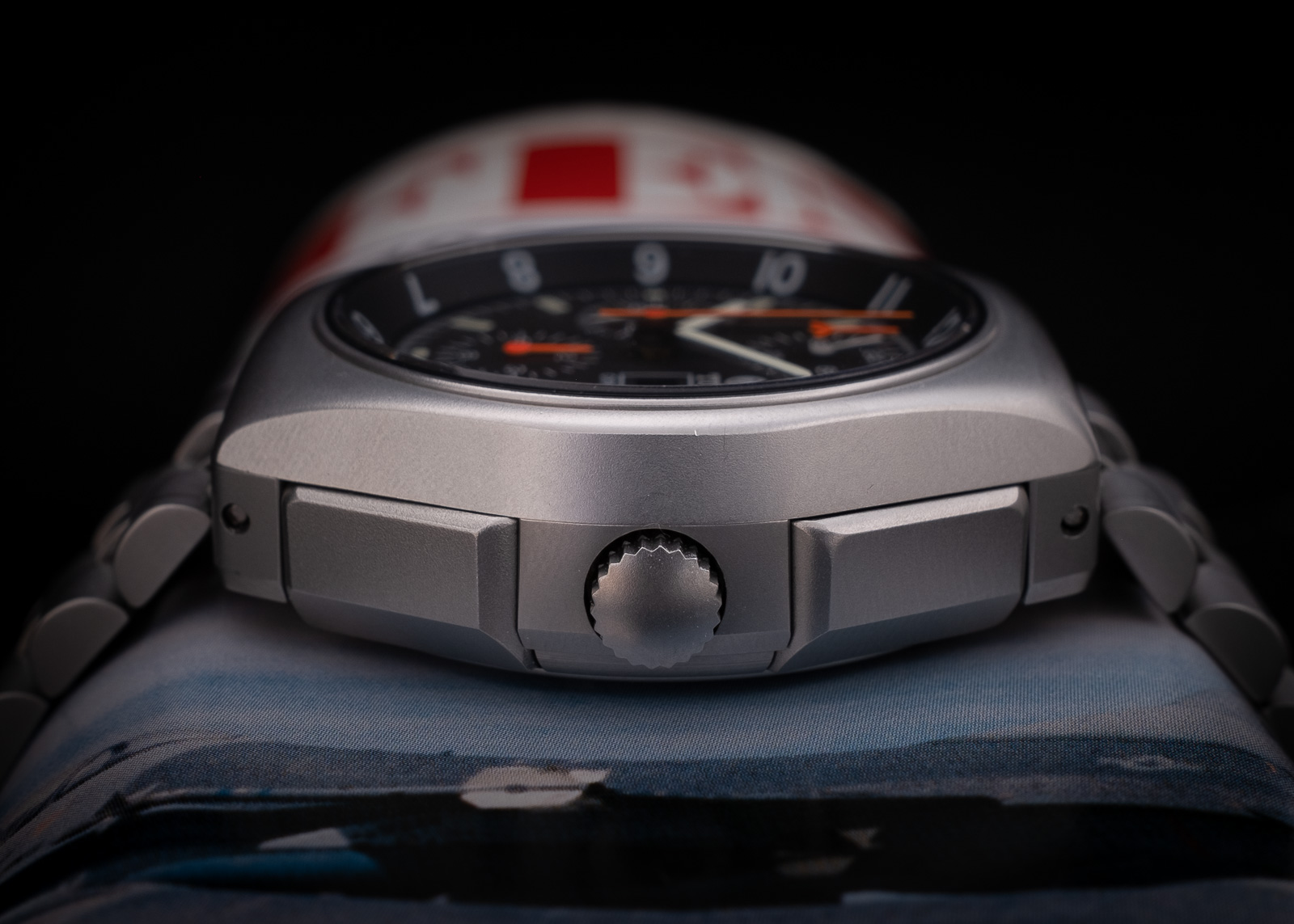
The integrated pushers give the 798 a distinctive case profile. Image – @breguet_numerals
That said, the captive integrated pushers work brilliantly as a piece of industrial design, giving the watch a bold and distinctive look that differentiates the 798 from similar watches like the Sinn 157, Orfina Porsche Design 717x, as well as the Tengler and Arctos BUND chronographs.
Individually, its features are hardly revolutionary innovations. But taken together, I believe they represent the pinnacle of mechanical pilot’s watch design and functionality.
The Lemania 5100: a legend within a legend
The Tutima 798 is powered by the Lemania 5100, an integrated automatic chronograph with a vertical clutch and stamped column wheel, along with a large balance running at 4 Hz that produces ample balance power.
The movement’s key feature is its central minutes counter, which displays both elapsed seconds and elapsed minutes on central hands. This feature provides a big step up for legibility compared to most chronograph movements, which display elapsed minutes on a 30-minute sub-dial.
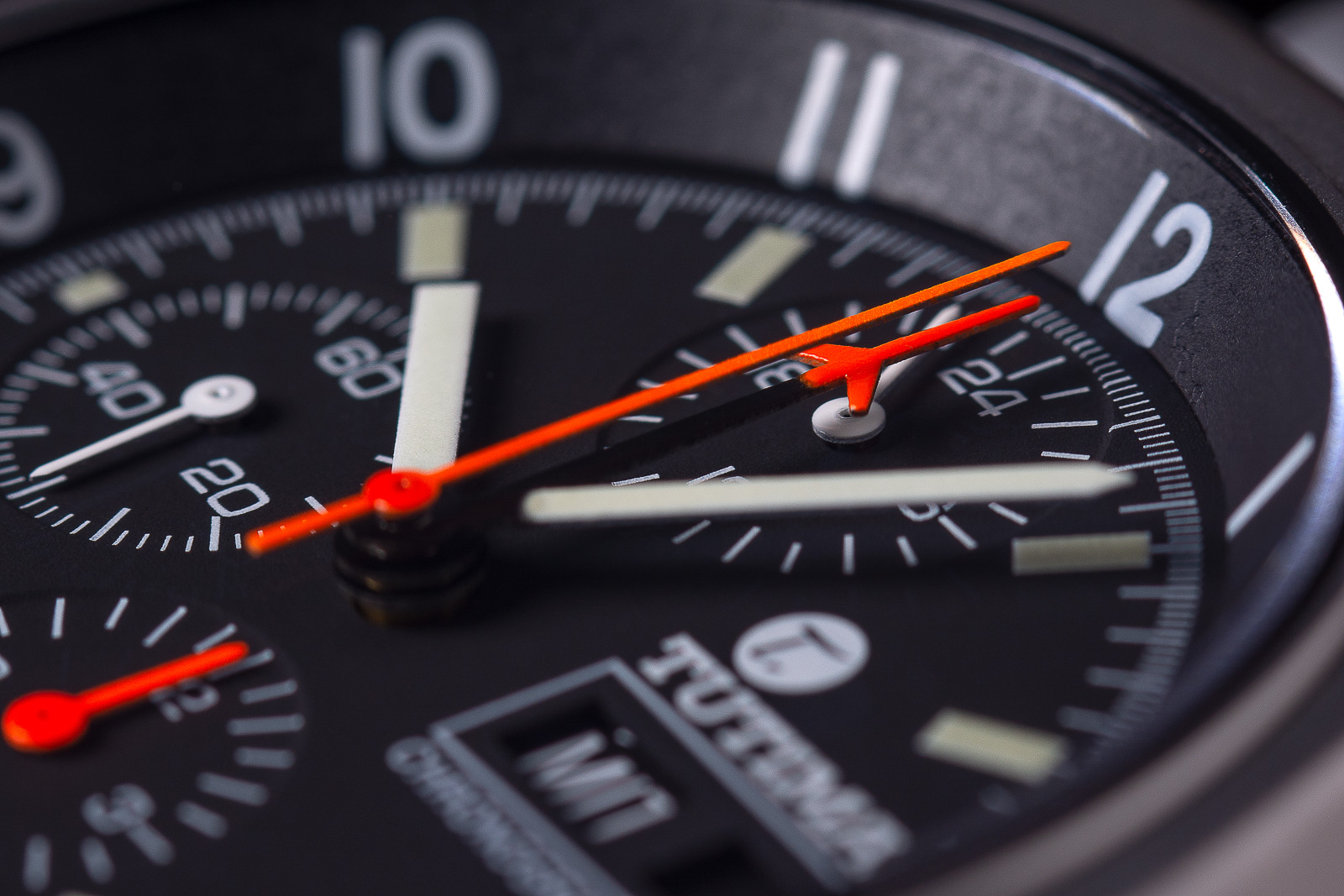
The Lemania 5100 displays elapsed seconds and elapsed minutes on central hands, making it much easier to read the chronograph at a glance. The airplane-tipped elapsed minutes hand has become an iconic design from this era. Image – @breguet_numerals
Introduced in 1974 as a replacement for the self-winding cal. 1340, the cal. 5100 has been used by numerous brands, including Omega, Heuer, Tutima, Sinn, Orfina, Fortis, Paul Picot, and Alain Silberstein.
In many ways, the Lemania 5100 is the mechanical equivalent of the Casio G-Shock. Designed for mass production, reliability, and durability, the cal. 5100 boasted wider tolerances and several components made of Delrin, a polymer material similar to nylon that has a low friction coefficient and is highly resistant to long-term wear. Lemania’s pioneering use of polymer components to help the movement absorb shocks resembles Casio’s approach to the same problem nine years later, though Casio went further, using polymer cladding to create a protective outer case as well.
Vertical clutch pioneer
While the Lemania 5100 is rightly famous for shock resistance and reliability, it should also be famous for something else: it was the first Swiss vertical clutch chronograph in almost 40 years.
While the vertical clutch has become the norm for modern chronographs, it was highly unusual when Lemania introduced it in 1974. In fact, the 5100 was the first vertical clutch chronograph movement produced in Switzerland since the short-lived, hand-wound Pierce cal. 130/136 of the 1930s, and the first Swiss-made, automatic vertical clutch chronograph movement ever.
While Seiko deserves credit for picking things up where Pierce left off and for bringing the vertical clutch back into vogue in 1969 with the cal. 6139, I still find it significant that the 5100 was the first Swiss movement in decades to utilise a mechanism that we now take for granted.
The Death of the 798
The death of the 798 is a tale that should sound familiar to anyone who has kept track of the fortunes of the mechanical watch industry over the past 40 years.
Designed and put into production during the last gasp of the pre-quartz era, the 798 was doomed from the start. Multifunction quartz watches like the Breitling Aerospace, Casio G-Shock, and Timex Ironman were becoming dominant amongst professionals, offering better precision, increased functionality, and lower prices. Unsurprisingly, the 798 failed to find commercial success even when it was eventually released to the public and remained a niche product for its entire production run.
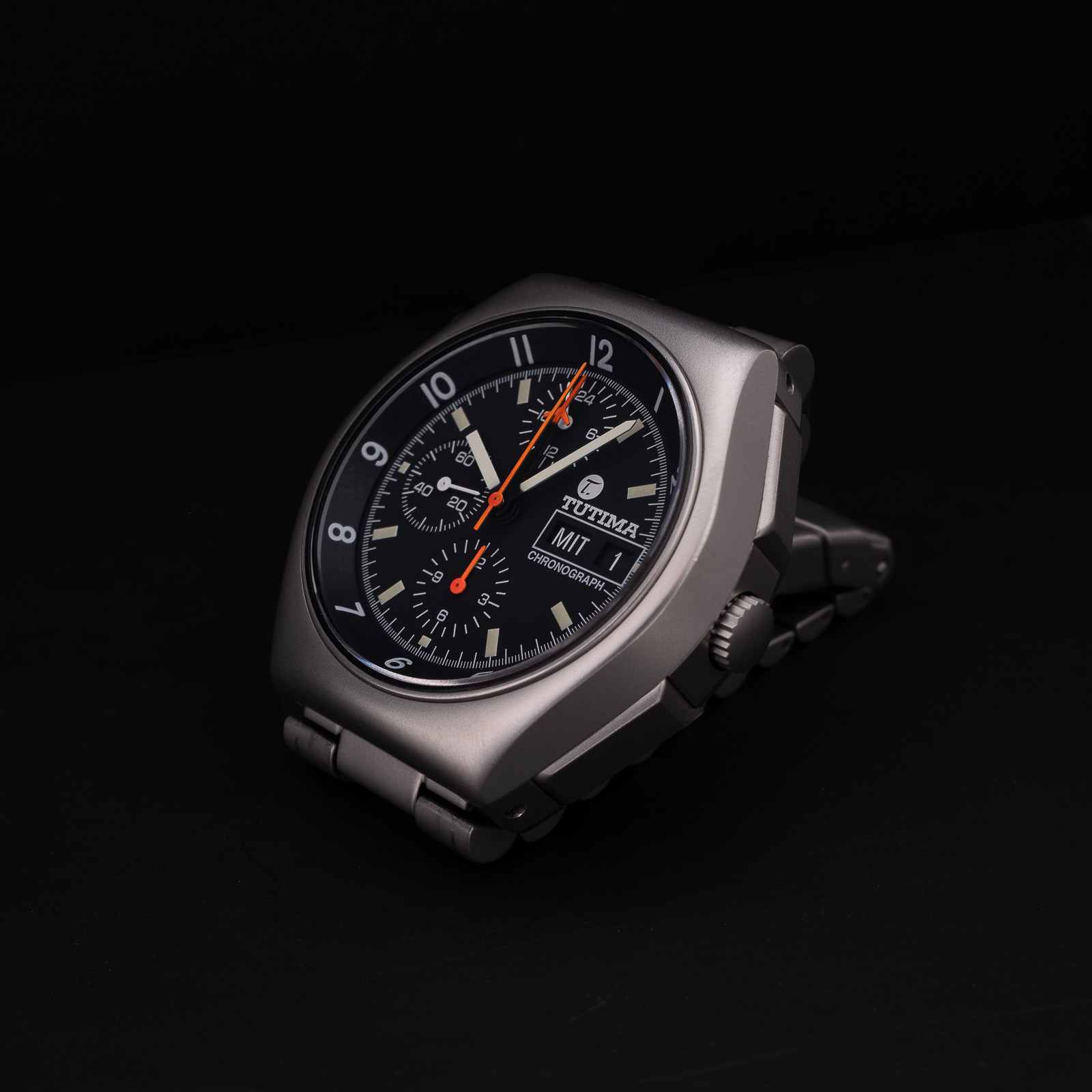
Image – @breguet_numerals
The death blow came when Lemania stopped making the cal. 5100. As the market for mechanical luxury watches began to take shape, Lemania started to concentrate on the manufacture of tourbillons and other high-end mechanical movements. In 1992, Lemania was acquired by Breguet, accelerating the company’s move upmarket.
In the early 2000s, Lemania decided the time was right to cease production of the cal. 5100 entirely. Tutima and Sinn were amongst the few customers for the movement, while quartz watches had become so reliable and inexpensive that it no longer made sense for military and police units to continue issuing mechanical chronographs to their personnel.
Tutima and Sinn continued to produce 5100-powered watches for a few more years until they exhausted their stocks of these movements. Both brands subsequently reverse-engineered the key features of the cal. 5100 by modifying the Valjoux 7750 to give it central display functionality, but these movements were installed in watches clearly targeted at luxury watch consumers who simply wanted the same look and feel as the originals, being simply too expensive for military use.

The Lemania factory in Le Chenit today, now dedicated to producing movements only for its parent Breguet. Image – Breguet
Summary
While the modern luxury watch industry is littered with military aviation-themed mechanical watches, none are part of the official-issue kit or considered vital equipment. Some brands like IWC, Breitling, and Bremont have signed licensing deals that enable them to make watches bearing the insignias of elite military units but these watches are not meant to be professional instruments. Instead, they are largely luxury products marketed to civilians, though each of those brands do produce specific models available only to eligible servicemen and women.
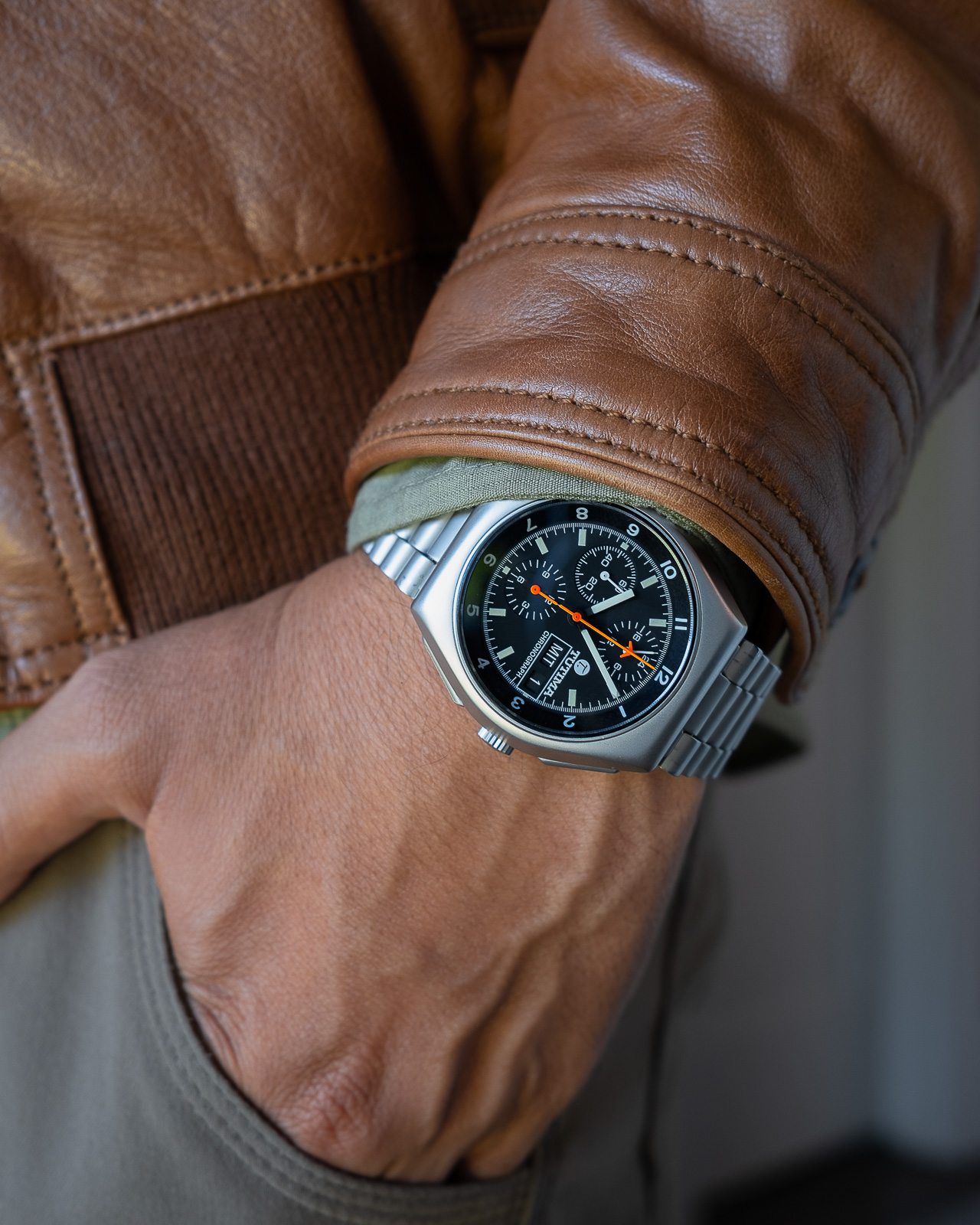
Image – @breguet_numerals
In my view, the Tutima 798 occupies a unique position in watchmaking history as arguably the last pilot’s watch designed in the era when mechanical watches were still vital pieces of equipment for use in life-and-death environments. If the procurement process had started a year later, I think it’s likely the West German government, and subsequently NATO, would have reached the same conclusion as the British and opted for quartz chronographs from Seiko, in which case the 798 would never have existed. This quirk of history bestows these watches with a unique kind of authenticity that is impossible to recreate.
The author’s watch was captured by watch photographer @breguet_numerals.

